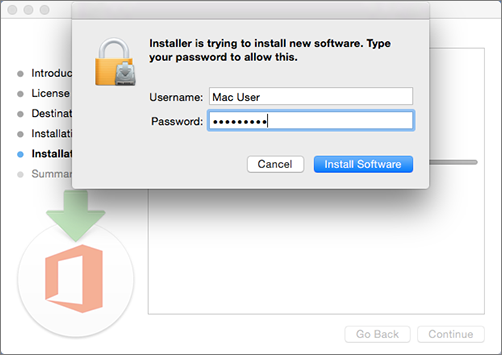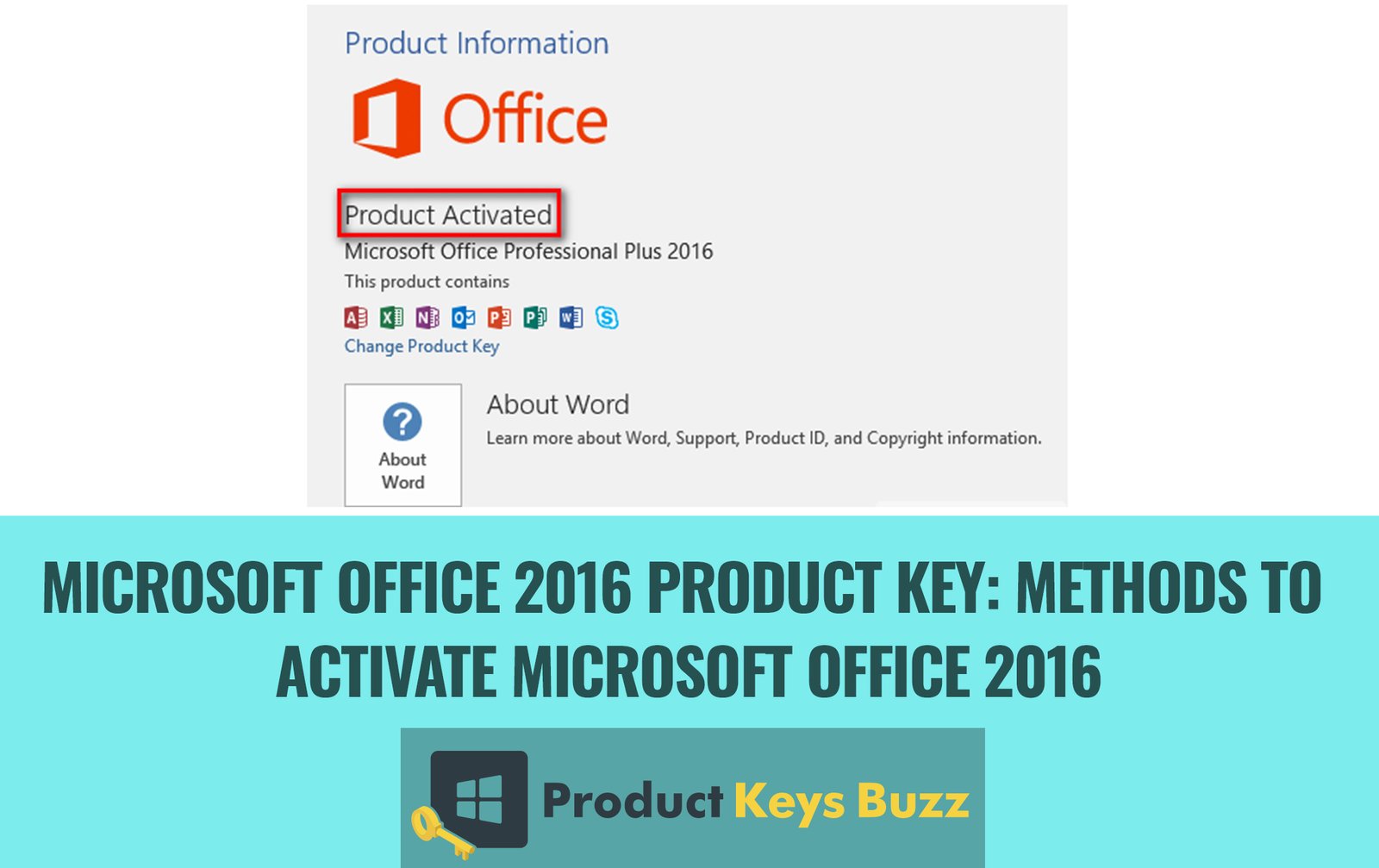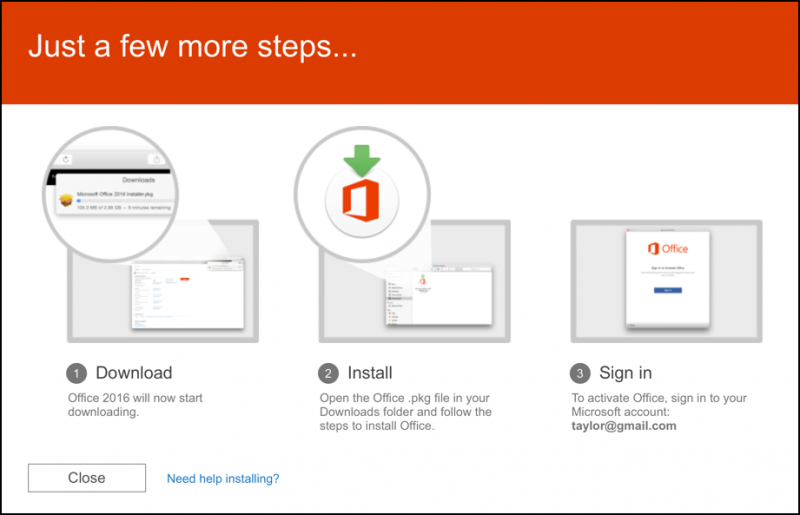
I recently started my internship in a company and I got an Office 2016 MSI installation. Everything is fine, except for one thing. It's in Swedish. While it's not an immediate issue, I'd much rather have it in. Microsoft Office 2016 v15.24.0 is available in Google Drive So this is the official offline Office for mac that came out recently, don't even need patch. is necessary remove cleary and make a new.
Microsoft Office is probably the flagship product for Microsoft, aside from Windows itself. There are more installs of Office out there than there are installs of Windows (all versions). Microsoft Office is available for Windows, Mac OS X, iOS, and Android. Enterprises use Office to such an extent that a computer isn’t really useful without Office installed.
Nonprofit Technology Chat: installing Microsoft Office 2016. I don't know if you managed to resolve this - I hit the same thing on a laptop donated to us that I put a clean Win10 install on and then a Office 2016 Std install from TechSoup and hit the same issue with the install. Microsoft Office 2016 - Unmistakably Office, designed for Mac. The new versions of Word, Excel, PowerPoint, Outlook, and OneNote provide the best of both worlds for Mac users - the familiar Office experience paired with the best of Mac. If you already use Office on a PC or iPad, you will find yourself right at home in Office 2016 for Mac.
Deploying Office to multiple computers over the network, at the time of imaging, or after, is a made simple with the use of an unattended install file (MSP). These files are created using a tool built in to enterprise releases of Microsoft Office. Consumer builds of Office, Office 365, do not include this tool, the “Office Customization Tool.”
To run the tool, execute the Office setup.exe command with the “/admin” modifier/switch.

setup.exe /admin
If Office has been imported into MDT, the application’s property sheet contains an “Office Products” tab where the customization tool can be launched. The tool contains no wizards, just an explorer-style interface with categories to the left and individual settings to the right.

The welcome page for the Office Customization Tool, which comes with Office 2016.
There are a dizzying array of settings that could be configured with the tool, but only a few stand out to make deployment easier across the enterprise. During any Office deployment, the product key, registered user and organization, and product activation must be considered into the process to prevent prompts for end users, and reduced product functionality.
First is the “Install location and organization name” setting under “Setup.” The default install location is fine, just enter the appropriate organization name.
Next, is the “Licensing and user interface” settings a couple of lines down. Select the appropriate licensing scheme for your organization, accept the licensing agreement, and choose the display level of “None” with the “Suppress modal” check box selected.
Office 2016 Mac Installer
Choose the correct licensing and make sure to suppress any dialog boxes that may appear during the install.
Go to the “Modify setup properties” a couple of lines down. Here, we need to add two settings that will allow Office to auto-activate and prevent setup from rebooting the computer. The two properties are called “AUTO_ACTIVATE” and “SETUP_REBOOT.” SETUP_REBOOT is simply set to “Never”, and the AUTO_ACTIVATE option is set to 1.
Add the two settings illustrated and their prescribed values.
Under the “Features” section, choose “Modify user settings.” This will change things for the end user experience in Office applications. The settings we’re focusing on are the “Microsoft Office 2016 Privacy Trust Center Disable Opt-in Wizard on First Run“, and “Microsoft Office 2016 First Run Disable First Run Movie/Disable Office First Run on application boot.” these will get rid of the annoying first-run prompts a user sees whenever they open Office for the first time. Who actually a thought a movie would be what a user wants to see the first time they run Word?
Turn off all of the annoying first-run things that Office throws at the user.
Next, choose the option underneath “Set feature installation states.” This is where Office would ask what components should be installed. The computers I administer are in public locations, like classrooms, so Microsoft Outlook is not needed.
Choose what you do not want installed with Office.
The last thing I do is create desktop shortcuts for Office applications. Choose the “Configure shortcuts” option under the “Additional options” section. Click the “Add” button to create a new shortcut. Choose the desired application for the “Target:” value. Choose the value “[DesktopFolder]” for the “Location:” property. One thing that must be done or this will not work is to add an open bracket “[” to the “Start in:” field. If this is not done, an error stating the start in folder is invalid will appear.
Create new desktop shortcuts the users should have for their Office applications.
We’re done! Now, the settings must be saved into an MSP file and placed in the “updates” directory of the Office installer. Choose “File” “Save as” from the menu at the top and choose a name for the MSP file. Microsoft recommends placing the numeral “0” at the front of the file’s name to guarantee it is the first to be read when Office is installed. Save the file in the updates folder of the Office installation directory. Now, each time setup.exe is run from that Office media, the setup parameters selected will be applied.
Enjoy!
Office 2016 Mac Release Date


Jason Watkins
11/3/15